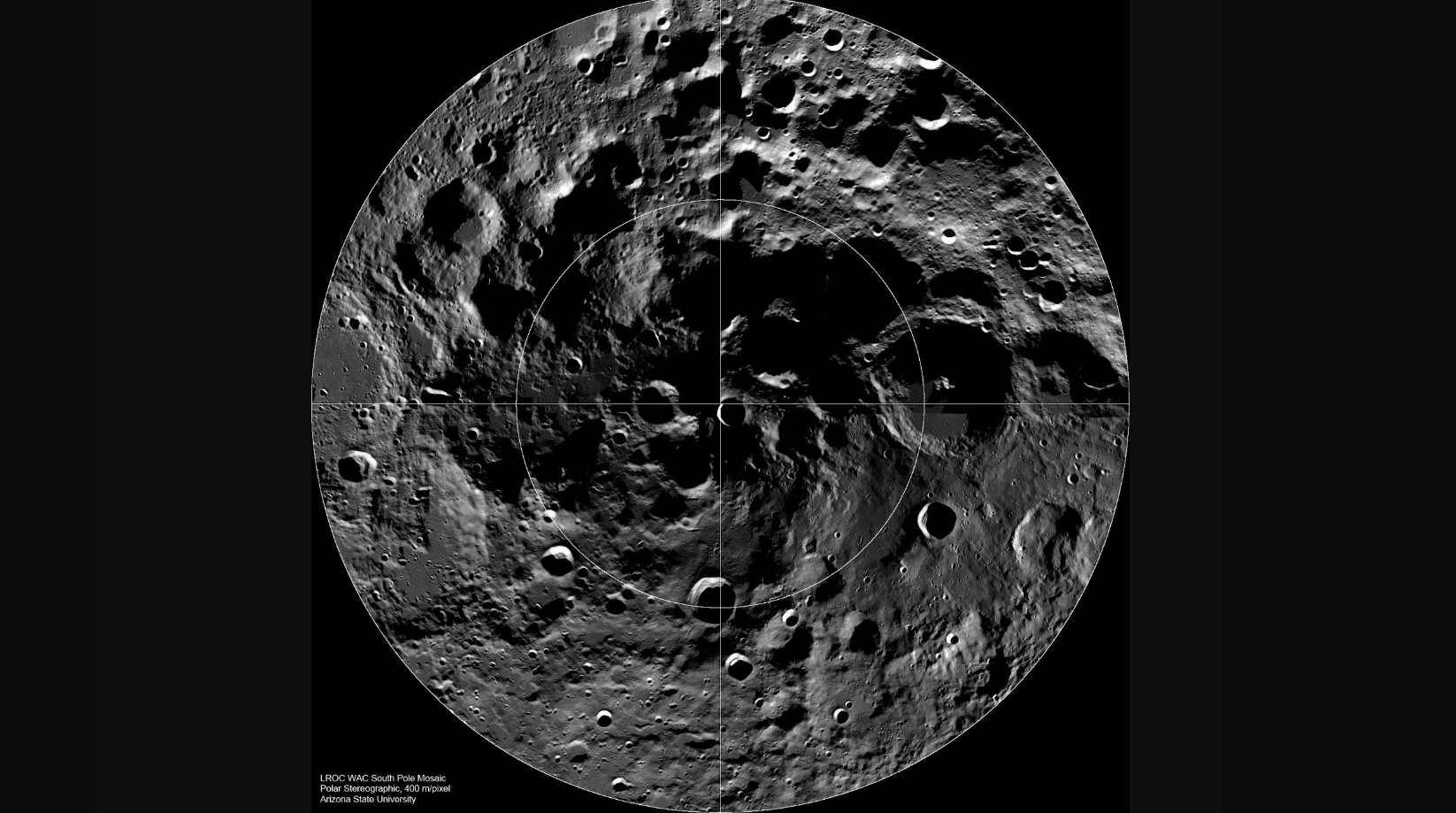WASHINGTON, Aug. 21 (CGTN) -- Scientists said Tuesday they have confirmed the existence of ice on the Moon's surface for the first time, a discovery that could one day help humans survive there.
Signs of ice on the Moon have been reported by scientists for years, but previous observations could have been explained by other phenomena, such as unusually reflective lunar soil, the study authors said.
"This is the first time scientists have definitive evidence for the presence of water ice on the surface," lead author Shuai Li of the Hawaii Institute of Geophysics and Planetology told AFP.
The ice mainly lies in the frigid shadows of craters at the lunar poles and was detected using instruments that flew on the Chandrayaan-1 spacecraft, launched in 2008 by the Indian Space Research Organization.
Using data from NASA's Moon Mineralogy Mapper (M3) instrument, researchers identified three chemical signatures "that definitively prove there is water ice at the surface of the Moon," said a NASA statement.
The polar regions where the ice lies are "super cold," Li said, noting that the warmest temperatures never reach above minus 250 degrees Fahrenheit (-157 degrees Celsius).
It is unclear exactly how much ice exists on the surface since the instruments could only detect ice within a few millimeters of the Moon's surface, he said.
But NASA said if there is enough of the ice, "water would possibly be accessible as a resource for future expeditions to explore and even stay on the Moon."
On top of that, there will be probably no need for the spacecraft to carry plenty of water from the earth when conducting the future exploration, which, to a large extent, will reduce the launch costs.
The US space agency is aiming to return humans to the Moon in the coming years for the first time since the storied Apollo missions of the 1960s and 1970s.
Li said the best way to find out more about the Moon's ice and how to tap into it as a resource would be to send a robotic rover to explore the lunar poles.
It is said that the Korean Pathfinder Orbiter, expected to be launched in 2020, is the first mission in the near future focusing on the lunar poles exploration.
The Korean Pathfinder Orbiter will be equipped with the ShadowCam, a NASA-made camera designed to observe the frigid shadowed regions, to search for evidence of frost or ice deposits.
The full study was published in Monday's edition of the Proceedings of the National Academy of Sciences.





